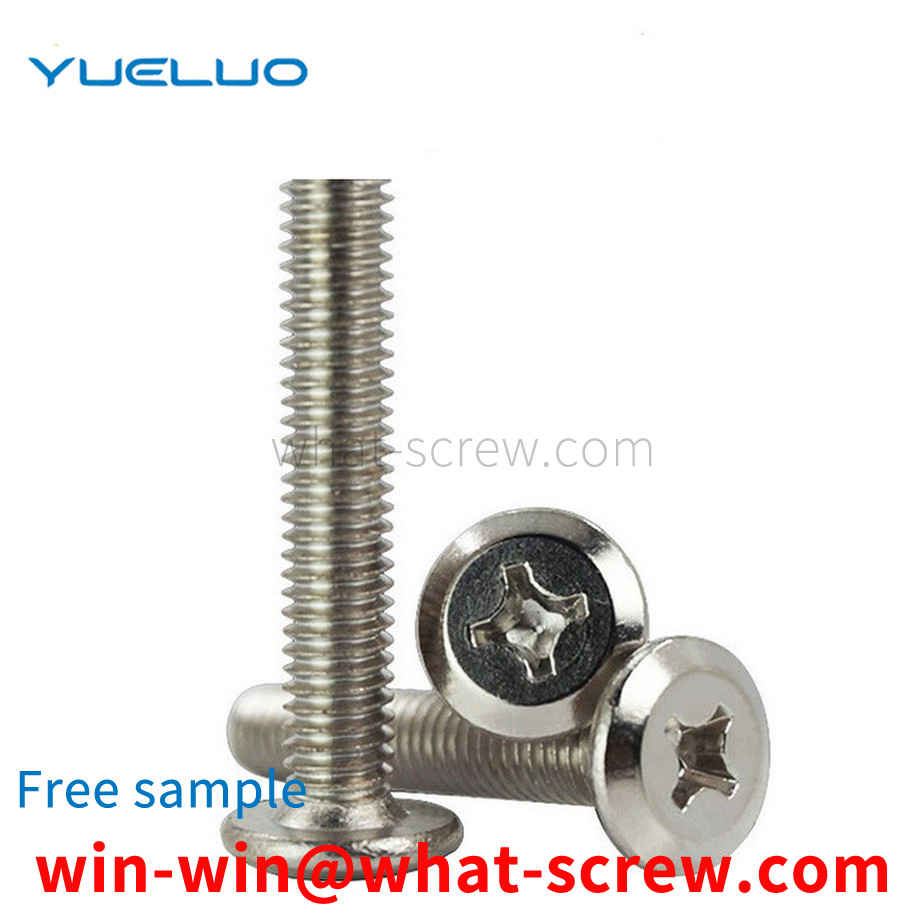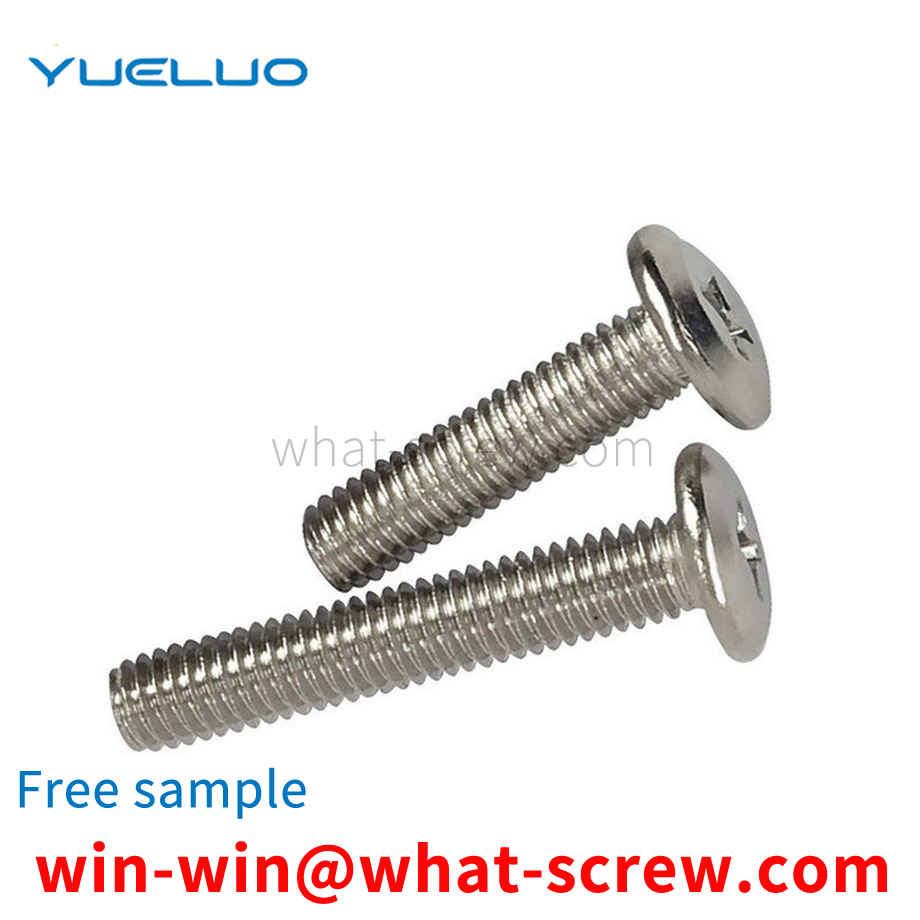Screws are a common fastener widely used in machinery, electrical appliances and buildings. The general material is metal or plastic, it is cylindrical, and the grooves engraved on the surface are called threads. Due to the different units of measurement, the representation methods of various threads are also different. For example, M16-2X60 represents a metric thread. His specific meaning is that the nominal diameter of the screw is 16MM, the pitch is 2MM, and the length is 60MM. Another example: 1/4—20X3/4 means the inch thread, what he specifically means is the nominal diameter of the screw It is 1/4 inch (one inch = 25.4MM), there are 20 teeth on one inch, and the length is 3/4 inch. In addition, if you want to express American screws, UNC and UNF are usually added to the back of the British screws to distinguish between American coarse teeth or American fine teeth.
At present, in the riveting of automobile and motor car parts, especially the parts that have vibration and need to move frequently, such as automobile steering gear, ordinary rivets and double-drum rivets are mostly used for riveting. Due to the limitations of the structure of these two products After riveting, the product has the defect of insufficient strength and easy to loosen and fall off, and it cannot be disassembled and can only be used once, thus affecting the quality and performance of the riveted product.
In the manufacture of fasteners, the correct selection of fastener materials is an important part, because the performance of fasteners is closely related to its materials. If the material is improperly or incorrectly selected, the performance may not meet the requirements, the service life may be shortened, or even accidents or processing difficulties may occur, and the manufacturing cost will be high. Therefore, the selection of fastener materials is a very important link. Cold heading steel is a steel for fasteners with high interchangeability produced by cold heading forming process. Because it is formed by metal plastic processing at room temperature, each part has a large amount of deformation and a high deformation speed. Therefore, the performance requirements of cold heading steel raw materials are very strict. On the basis of long-term production practice and user research, combined with GB/T6478-2001 Technical Conditions for Cold Heading and Cold Extrusion Steel GB/T699-1999 High-Quality Carbon Structural Steel and target JISG3507-1991 Cold Heading Characteristics of Carbon Steel Wire Rod for Steel, taking the material requirements of grade 8.8 and grade 9.8 bolts and screws as an example, the determination of various chemical elements. If the C content is too high, the cold formability will be reduced; if it is too low, the mechanical properties of the parts cannot be met, so it is set at 0.25% - 0.55%. Mn can improve the permeability of steel, but adding too much will strengthen the matrix structure and affect the cold forming performance; when the part is quenched and tempered, it has the tendency to promote the growth of austenite grains, so it should be appropriately improved on the basis of international standards. 0.45 % - 0.80 %. Si can strengthen the ferrite and reduce the cold formability. SP is an impurity element, and their existence will cause segregation along the grain boundary, resulting in the embrittlement of the grain boundary and damage to the mechanical properties of the steel. It should be reduced as much as possible. B. The maximum value of boron content is 0.005%, because although boron element can significantly improve the permeability of steel, it will also increase the brittleness of steel. Excessive boron content is very unfavorable for workpieces such as bolts, screws and studs that require good comprehensive mechanical properties.
It is suitable for plates of various thicknesses, with a minimum thickness of 0.8mm. When using, the tail number Z corresponding to size A must be determined according to the thickness of the plate and the specification of the nut. The user selects samples and orders according to the tail number in the table according to the thickness of the plate; Accurate control, processing according to the tolerance size of 0-+0.075mm, is punching, and the nut should generally be installed from the broken surface of the plate. The installation process is generally achieved through press riveting operations, and must not be impacted and knocked in.
National standard lock nut GB/T 6182-2000 Type 2 non-metallic insert hexagonal lock nut. GB/T 6183.1-2000 Non-metallic insert hexagonal flange lock nuts. GB/T 6183.2-2000 Non-metallic insert hexagonal flange lock nuts - fine pitch. GB/T 6184-2000 Type 1 All-Metal Hexagon Lock Nuts. GB/T 6185.1-2000 Type 2 all-metal hexagonal lock nuts. GB/T 6185.2-2000 Type 2 all-metal hexagonal lock nuts with fine teeth. GB/T 6186-2000 Type 2 All-Metal Hexagon Lock Nuts Grade 9. GB/T 6187.1-2000 All-metal hexagonal flange lock nuts. GB/T 6187.2-2000 All-metal hexagonal flange lock nut with fine teeth. GB/T 889.1-2000 Type 1 non-metallic insert hexagon lock nuts. GB/T 889.2-2000 Type 1 non-metallic insert hexagonal lock nut fine pitch.
We have many years of experience in the production and sales of screws, nuts, flat washers, etc. The main products are: DIN933 screws, pin positioning posts, pressure riveting nuts, flat knurled rivet nuts and other products, we can provide you with suitable fastening products piece solution.



















 Service Hotline
Service Hotline




